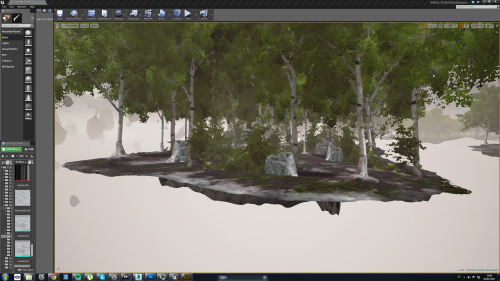We are far from june, but we’ve been working in a single topic that eaten the major part of our development time and we wanted to wait until it was crushed before telling you what drove us mad last weeks. Everything is related with the forest levels. Those levels can’t work in a virtual reality environment as they had been conceived in the original version.
The main reason is performance. In virtual reality you need to render two times the game, one for the left eye, and another time for the right one, consequently the graphic performance needs to be doubled so when the virtual reality is enabled, the game will perform enough.
Due to the large amount of models in this level it was impossible to keep a good FPS rate, consequently the whole forest levels have been completely reconceptualized. This is possibly the major aesthetic change done in the conversion to Unreal Engine 4 of MIND: Path to Thalamus. Until now the changes were merely optimizations and effect adaptations when they do not work in virtual reality, as well as the inclusion of PBS, but with this environment we directly decided to start from scratch at visual level, the same mechanics, different visual context.
As you may remember, we came from the zone where we move through a series of floating islands. Following this concept, the levels are made of forest islands, reducing drastically the number of elements in the screen. In fact, the level of detail of the further islands are much lower than the main island to reduce the render cost.
Moreover, even in the main forest there are zones with lower detail level and we have replaced the grass with fallen leaves and foliage, reducing alpha testing because it’s made from horizontal planes instead of the vertical ones of the grass in the original game. Transparency management is resource expensive because the way game engines save resources is rendering only visible entities, but when you have transparent elements, first you will need to determine which elements it haves behind to draw them, and if those one have transparency too, you will need to go further to know if there’s something more to be drawn.
In the next devlog we will see how another zone that remains to be converted to Unreal Engine 4 also is giving us problems. The “neuron” level uses a lightning technique that does not exists in the last version of the Epic’s engine.
